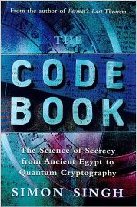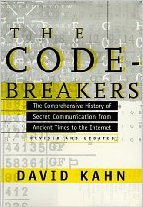Codes and Nomenclators Cipher
Introduction §
Nomenclators use elements of substitution ciphers and of codes. They generally combined a small codebook with large homophonic substitution tables. Originally the code was restricted to the names of important people, hence the name of the cipher (a nomenclator was a public official who announced the titles of visiting dignitaries), however it gradually expanded to cover many common words and place names as well. The symbols for whole words (called codewords) and letters were not distinguished in the ciphertext. The Rossignols' Great Cypher used by Louis XIV of France was an example of a nomenclator. After it went out of use, messages in French archives were unbreakable for several hundred years.
Nomenclators were used for diplomatic correspondence and espionage from the early fifteenth century to the late eighteenth century, however they were being routinely broken by the mid-sixteenth century.
Codes are an extension of nomenclators, in which all words (or entire phrases) are replaced by symbols (instead of the letters in ciphers). The use of words removes any possibility of using letter frequency analysis, but it introduces its own problems since it requires a huge number of symbols (1 for each word). These symbols are generally written in a code book, which is generally a thick book the size of a standard dictionary.
References §
- Wikipedia has a good description of the encryption/decryption process, history and cryptanalysis of nomenclators and codes.
- Simon Singh's 'The Code Book' is an excellent introduction to ciphers and codes.
- Singh, Simon (2000). The Code Book: The Science of Secrecy from Ancient Egypt to Quantum Cryptography. ISBN 0-385-49532-3.
Contents
Further reading
We recommend these books if you're interested in finding out more.
 The Code Book: The Science of Secrecy from Ancient Egypt to Quantum Cryptography
ASIN/ISBN: 978-1857028799
Simon Singh's 'The Code Book' is an excellent introduction to ciphers and codes
Buy from Amazon.com
The Code Book: The Science of Secrecy from Ancient Egypt to Quantum Cryptography
ASIN/ISBN: 978-1857028799
Simon Singh's 'The Code Book' is an excellent introduction to ciphers and codes
Buy from Amazon.com
